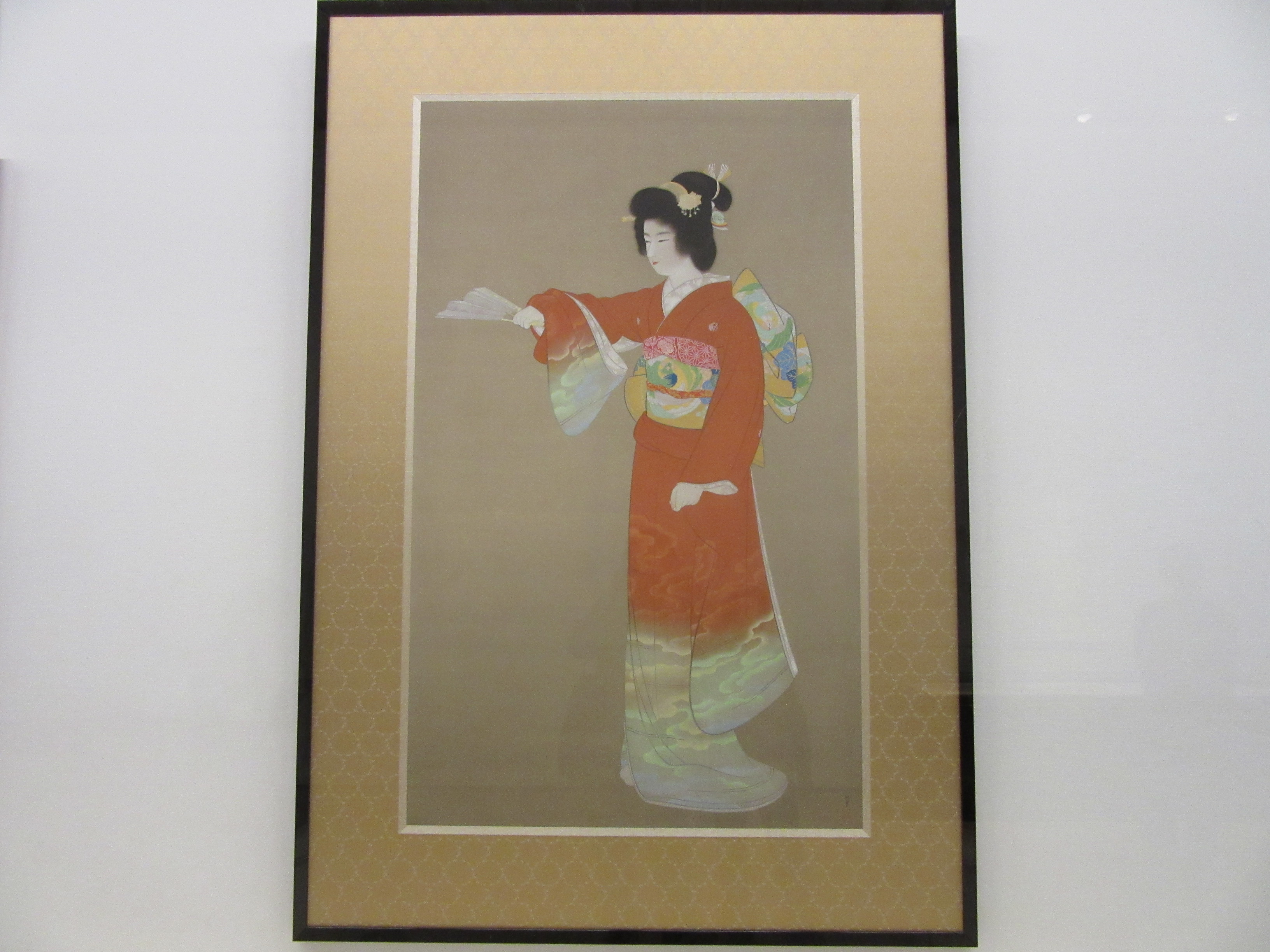
Uemura Matsuen "Maiko no Mai" (important cultural property) Showa 11 (1936) Tokyo National University of Fine Arts and Music Collection
"East and West beautiful masterpieces" are held at the Tokyo University of the Arts University Art Museum from Saturday, March 31, 2010 to Sunday May 6, 2018.
A press coverage was held on March 30, so I will tell you the state of the exhibition.
Uemura Matsuen , a female painter who established his own style in beautiful painting while learning from Suzuki Matsuyoshi and Takeuchi Seupori in Kyoto. The work which is regarded as the highest masterpiece of that shochu is a "maiko no dai" which motifs the Noh music that the student learned familiarly.
This work, also referred to as "a scene like a scented high-grade gem which is clearly felt, without one vulgar place", was designated as an important cultural property of the country as a masterpiece of modern beauty painting.
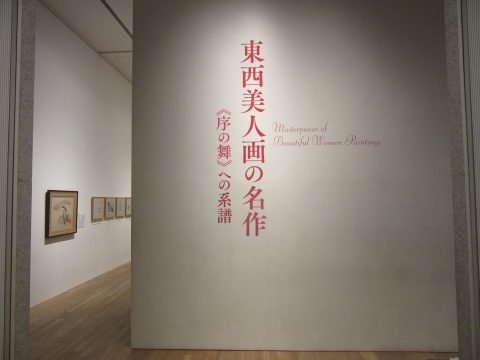
This time, the repair of "Maiko no Mai" was completed, and it was carried to the public for the first time at "masterpiece of East-West beautiful painting". This exhibition introduces the development of beautiful paintings in Tokyo and Kansai from the middle of the Meiji Period to the prewar Showa era while exploring the origin of modern beauty paintings in genre paintings and Ukiyoe in the Edo period. We will follow the genealogy of beautiful paintings up to "Maiko no Mai".
Origin of beauty painting
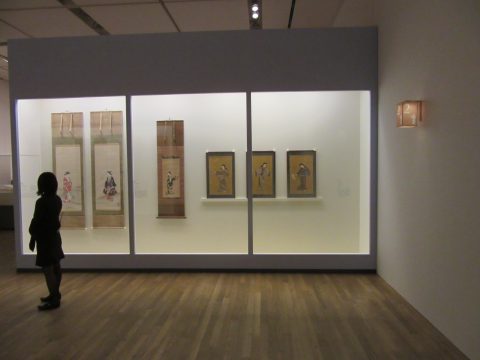
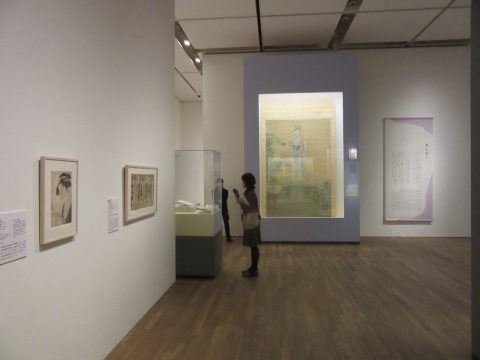
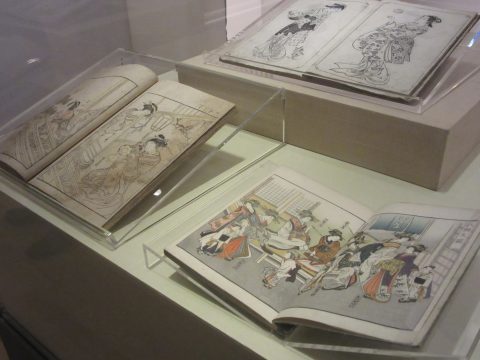
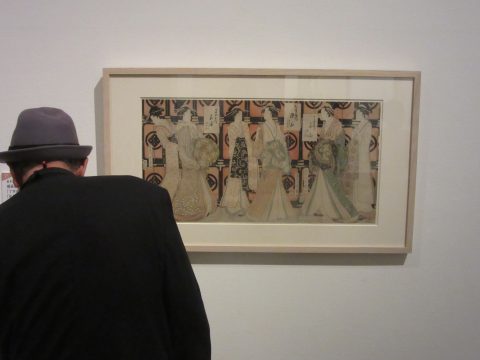
In the first chapter, we will introduce women's expression in the early genre paintings of the early modern era, and explore the "source flow" of beautiful paintings.
The beautiful figure established in the early Edo period will be established to the genre "Ukiyo-e beautiful painting" by the appearance of Ukiyo-e artists such as Mushihisa Hisakawa eventually. Since then the improvement of woodcut technology has made the prints of multicolored prints popular, while the handwriting paintings directly painted by painters such as hanging scrolls were liked and handed down to modern beauty paintings.
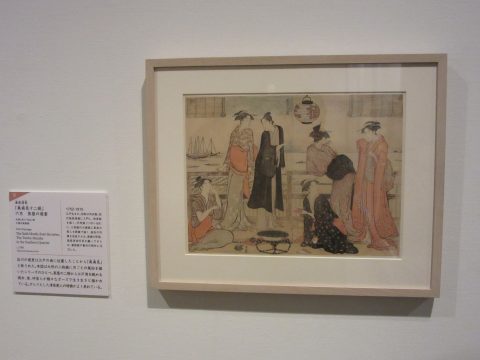
In this chapter, women of all sorts such as shrine maiden, samurai 's daughter, prostitute, etc. are drawn, but especially those left in impression are the prostitutes who feel refreshing vitality and sex appeal.
This is a work of Kiyoshi Torii Torii, which depicts a lot of illustration of the yellow cover (picture book) "Misan Jimi 12" . It depicts the lives of prostitutes of Shinagawa in one month's scenes, this is a picture in June. Contrary to somewhat typographically drawn faces, poses are different for each person, such as looking, and the lively atmosphere of the place is transmitted.
Beauty of the East

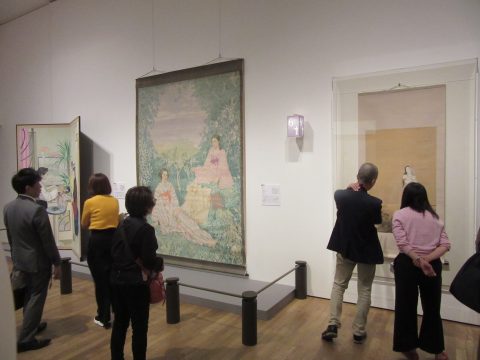
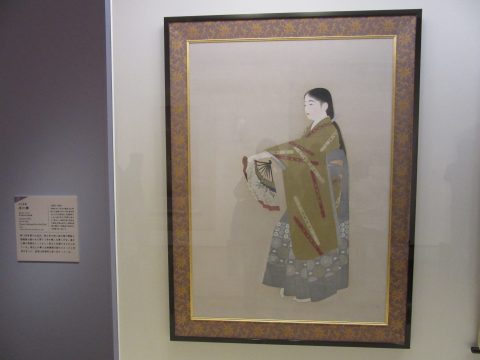
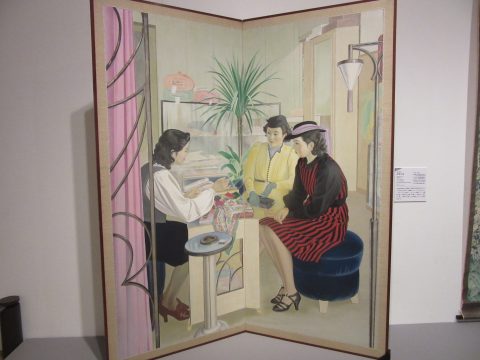
Although the beautiful paintings of ukiyo-e prints were popular even in modern times, on the other hand, the Tokyo Art School (currently Tokyo Arts University) founded in 1887 in the Meiji era (now the Tokyo University of the Arts) Was pursued, and aiming at new creation of modern Japanese painting was aimed. In this chapter, various women's expressions in the Tokyo paintings since the Meiji 30's are introduced. Compared to the beautiful painting in the previous chapter, you can understand the process that realistic facial expressions, gestures, and stereoscopic effects were pursued.

A painter who blew out the world with a work that brings out the emotion of Meiji from Edo, Kiyoshi Saki . Kiyoshi who was active as a flower-shaped artist at a government exhibition in the Tokyo painting arts was referred to as "the east of the east" against Uemura Matsuen in the west. This " Qing Qiu" is a work that depicts the appearance of a woman thought in the autumn, and it shows well the typical beauty manga format of Kiyoshi's maturity period.
West beauty
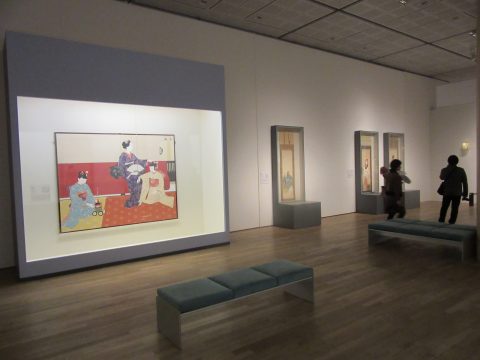
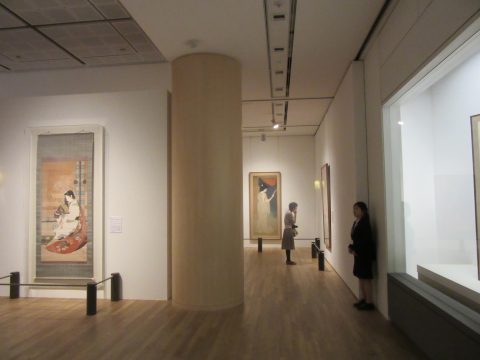
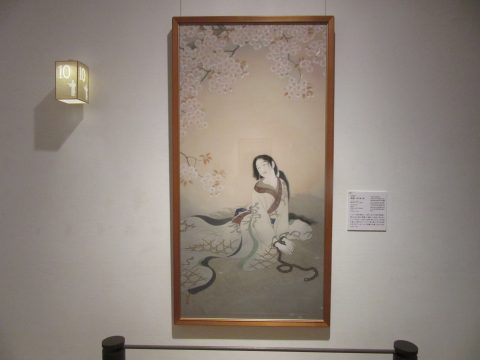
In this chapter, we introduce the works of beautiful paintings created in the Kansai area that cultivated the art of Shozo, from the Meiji to the Showa era. In the Kansai area, there is a development of beautiful paintings with a slightly different tendency from the Tokyo Art Museum, and the theme like Tang beauty drawn by Maruyama / Shijo school was handed down to the next generation such as Matsuo.
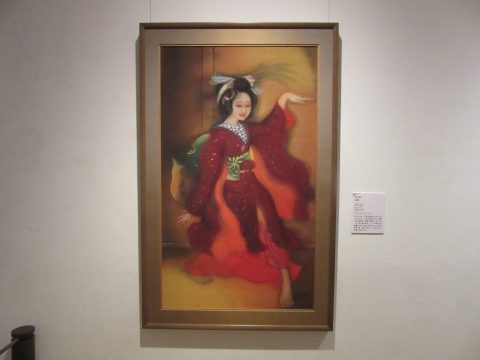
In the late Taisho era Kansai, with the development of psychological realism and precise realistic expression that revealed the inner surface, the possibility of new beautiful paintings was opened up.
This is a work called "hallucination" by Kai Sho Nuson sound of Kyoto. Red legs like dancing, red bamboo like a rising flame. It is a theme that imagines the "greengrocer's seven" which caught fire as a result of seeking a lover and became a death sin and has a striking magical charm.
Vertex of a beautiful painting
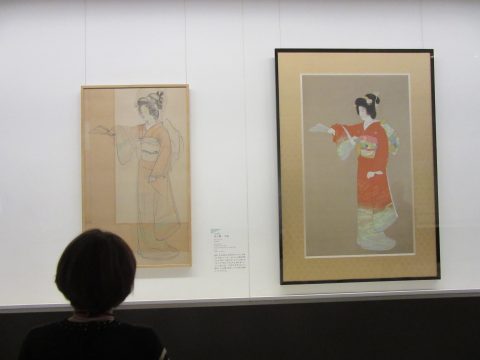
Along with the restored "Maiko no Mai" (right), the illustration (left) is introduced side by side

"Maiko no Mai" Sketches drawn during production

Painting materials used by Matsuzen are also exhibited
In the last chapter, "Introduction chapter" of Uemura Matsuen who completed restoration is displayed with its undergrowth and sketches.
Uemura Matsuen who was born in Kyoto in 1875 in Meiji Era (1875) started practicing painting from his teenage years and has had a special interest in drawing a woman at a short time. As a result, he won many prizes at domestic exhibitions and expositions, and established himself as a beauty painter during the Meiji 30's. "Maiko no Mai" can be said as a crystal of its paintings, and it is described as "the highest peak of modern beauty paintings" from its historical and artistic value.
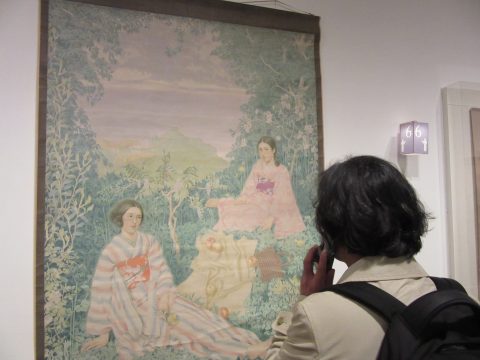
Also, the content of the voice guide is particularly substantial in this exhibition. Claude Debussy and Gabriel Faure, along with French music since the late nineteenth century, it is structured so that you can enjoy the image of the exhibition even with hearing. Commentary was written specifically for this voice program. While listening to commentary to participate in the gallery tour, you can enjoy the world of beautiful paintings.
The exhibition is from March 31 (Sat) to May 6 (Sun) in 2018.
The figure of a dignified "woman", the figure of "mother" full of charity.
Exhibition "Eastern and Western beauty painting masterpieces" gathered by beautiful gems 'gems' works, why do not you go check it out.
The summary is here:
https://home.ueno.kokosil.net/en/archives/20449


